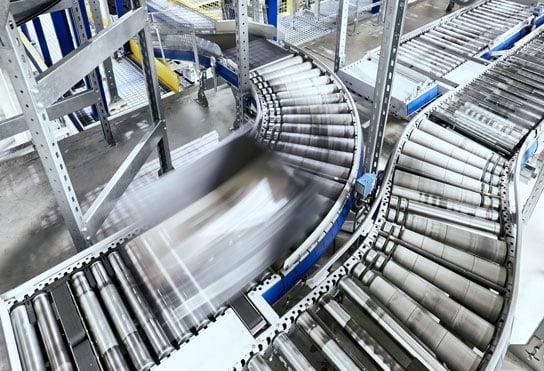Let’s start with the dangers of roller conveyors. First and foremost, there’s the risk of entanglement. If a worker’s clothing, hair, or body parts get caught in the moving parts of a roller conveyor, it can cause serious injuries, such as amputations, fractures, or even death. That’s why it’s crucial to keep loose clothing and accessories away from the machine and never reach into the conveyor while it’s running.
Another danger of roller conveyors is the potential for falling objects. If workers stack heavy or unstable loads on the conveyor, they can topple over and injure anyone nearby. To prevent this, it’s essential to train workers on proper loading and unloading techniques and provide them with appropriate equipment, such as pallet jacks or forklifts.
Finally, roller conveyors can also create tripping hazards if not installed or maintained correctly. Workers can trip over uneven or damaged rollers, loose or missing guards, or cluttered work areas. That’s why it’s essential to conduct regular inspections and repairs, keep the work area clean and organised, and mark any potential hazards with visible signage.
Now, let’s move on to some safety recommendations for working with roller conveyors. These tips will help you protect your workers and avoid accidents on your worksite.
First, always follow the manufacturer’s instructions and guidelines for installation, operation, and maintenance of the roller conveyor. These guidelines will provide you with essential information on load capacity, speed limits, guard requirements, and more. If you’re not sure about something, don’t guess – contact the manufacturer or a qualified technician for assistance.
Second, train your workers on safe working practices when using the roller conveyor. This training should cover proper loading and unloading techniques, how to avoid entanglement and tripping hazards, how to respond to emergencies, and more. Make sure your workers understand the risks and the importance of following safety procedures at all times.
Third, provide your workers with appropriate personal protective equipment (PPE) for working with the roller conveyor. This may include safety glasses, hard hats, gloves, steel-toed boots, and high-visibility vests. Make sure your workers wear their PPE correctly and replace any damaged or worn-out equipment promptly.
Fourth, conduct regular inspections and maintenance of the roller conveyor. Check for damaged or missing guards, worn-out or damaged rollers, loose or missing bolts, and other potential hazards. Repair or replace any damaged or worn-out parts immediately to avoid accidents.
Fifth, keep the work area clean and organised. Remove any clutter, debris, or obstacles that could create tripping hazards or interfere with the operation of the roller conveyor. Mark any potential hazards with visible signage, and make sure your workers know the location of emergency stops and switches.
Sixth, create a culture of safety in your workplace. Encourage your workers to report any safety concerns or near-misses, and take their feedback seriously. Recognise and reward workers who follow safety procedures and demonstrate a commitment to safety.
In conclusion, working with roller conveyors can be dangerous if not done correctly. However, by following the safety recommendations I’ve outlined above, you can minimise the risks and create a safe and productive workplace for your employees. Remember, safety should always be a top priority in any business, and it’s up to you as a business owner to take the necessary steps to protect your workers. Thanks for tuning in, my friends. Until next time, stay safe and keep crushing it!
Cheers,

![]()






